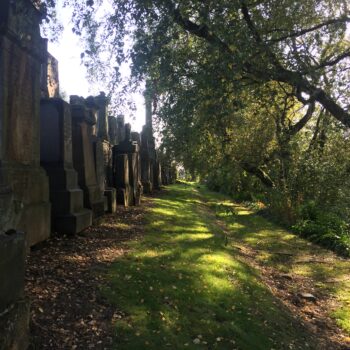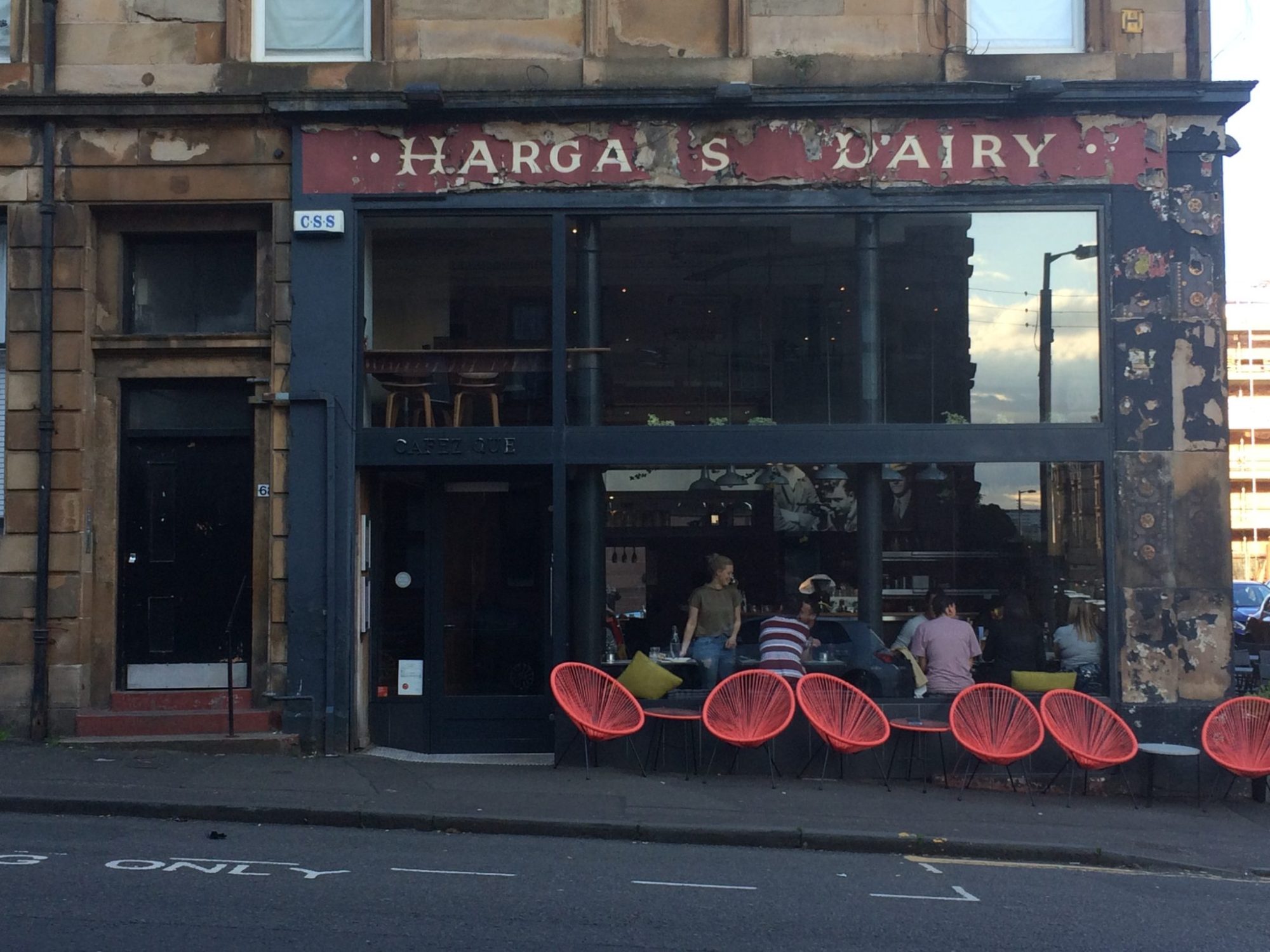
Wednesday 28th October 2020 | 6pm GMT | via Zoom
Join us for a GCHT Halloween spooktacular as we explore two of our most impressive local Victorian garden cemetries, the Glasgow Necropolis and Cathcart Cemetery. The garden cemetery movement was an expression of Victorian civic pride, reflecting the tastes and aspirations of society. Not surprisingly, they became favourite places for recreation, where people could visit, take a stroll and get some fresh air. In recent months we’ve all been rediscovering our local parks and green spaces, so if you’ve been exploring the Necropolis or Cathcart Cemetery as part of your daily walks roster, why not join us to find out more about them?
Cathcart Cemetery was opened in 1878 and is named after the nearby neighbourhood of Cathcart, situated on the outskirts of Glasgow. It contains over 200 war graves and has a Jewish section. Notable burials include Scottish artist and sculptor Hannah Frank and Margaret ‘Madge’ Jefferson, actress and mother of Stan Laurel. Jonathan Tremlett, Co-Chair of the Friends of Cathcart Cemetery, will be telling us more about the fascinating history of this cemetery. He may even throw in a few ghost stories for good measure!
We’ll then head to the east of the city, to Glasgow Necropolis, for a presentation by Architect, Author and Historian Fiona Sinclair. Inspired by the Pere Lachaise in Paris, the Necropolis opened in 1833. Over fifty thousand individuals are now buried here and there are around 3,500 monuments. Fiona will talk mainly about her work on the Monteath Mausoleum, which is the subject of a restoration project by the Friends of Glasgow Necropolis.
The Mausoleum is the final resting place of Major Archibald Douglas Monteath, who had served as an Officer in the East India Company and died in 1842, and his brother James Monteath Douglas, who died in 1850. The Mausoleum was designed by David Cousin and is said to have been inspired by the Knights Templar Church of the Holy Sepulchre. It is noted for the 48 ‘Dwar Palas’ or ‘dvarapala’ adorning the entrance. These ‘door guardians’ are common in Hindu, Buddhist and Jaina cultures and feature in many temples, palaces and forts.
Free, booking required, donations welcome.
[ESPRESSO_TICKET_SELECTOR event_id=16230]
Please note: Payment is taken via PayPal but you do not need to have a PayPal account to pay online.
We are using Zoom to broadcast our live talks. You can join these events as a participant without creating a Zoom account. You do not need to have a webcam or a microphone to join the event as a participant.
You will receive instructions on joining the event by email. If you haven’t received anything by midday on the day of the event, please check your spam folder and then contact us.



